Korean Eating: The Winter Delicacy Known as Gwamegi
Last Updated on November 10, 2023
Interested in Korean food? Want to try a Korean delicacy that a lot of people have never tried before? Wait until winter, and this is the Korean dish you need to check out. Gwamegi (과메기), or Pacific herring, is a fishy Korean treat that is something that I always look forward to when the temperatures get cool. If you like seafood, then you’ll want to find this Korean dish this winter in Korea. Just make sure you’re headed to the southern coasts to try it because that’s where it’s the best.

Here’s what to know about gwamegi, the Korean winter delicacy:
(This post contains affiliate links, which means I receive a certain percentage of a sale if you purchase after clicking. These funds go to maintain the site. Thank you for your support.)
What is gwamegi?
As you look around the tables of food this winter in Korea, you may notice an addition that you don’t see the rest of the year; gwamegi (과메기) is half-dried Pacific herring or saury that comes into season mid-winter. This fish dish which comes from the term “gwanmogeo” which would translate to “dried herring hung by lacing a cord through its eyes” is often eaten in regions where large hauls of fish are harvested like Pohang, Uljin and Yeongdeok.
Guryongpo Harbor in Pohang is said to be the most famous place in Korea to get these bite size fishy goodies, but they can be found from south to north if you know where to look.

How is gwamegi made?
If you’re in the right Korean village from mid-November to February, you’ll be able to see rows and rows of drying racks with Pacific saury or Pacific herring.
For a little aside, gwamegi was originally made with Pacific herring as it was cheap and plentiful in Korea. But in the 1960s, Pacific herring populations dwindled a bit and so local fishermen shifted their attention to Pacific saury. The fish are quite similar but pacific saury is longer and slimmer and less oily. This means that when it comes to drying, the saury takes just 3-4 days to dry while herring takes 10 days.
Fresh herring are rinsed with sea water and then hung up to dry seaside where the salty breezes blow. They are frozen and placed outdoors to repeat a process of freezing at night and defrosting during the day until the water content in the fish has dropped to 40%. This process only takes three to four days. The salty wind prevents the fish from rotting and is said to be the most important element in producing delicious and chewy gwamegi.
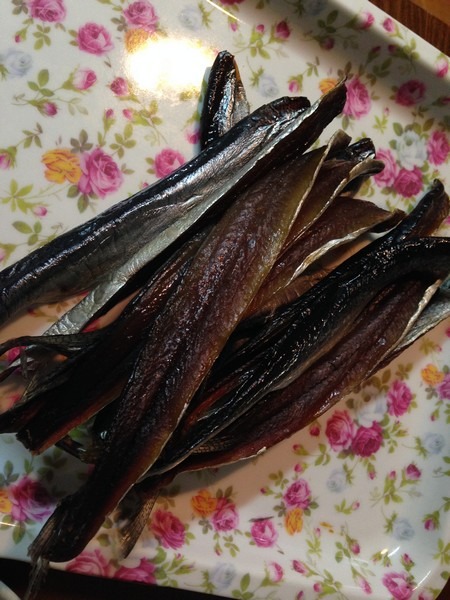
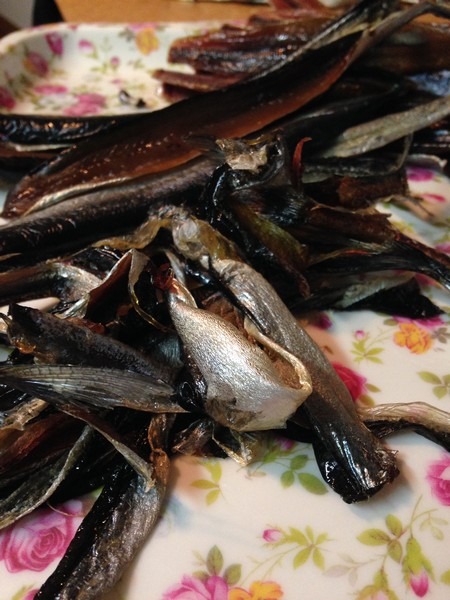
Eating gwamegi
Never one to pass up a good fish dish while in Busan (the cod soup is one of my favorites), I dug right in as instructed. Some say this fish is smelly, but maybe since I’m a fish person, I didn’t notice a fishy odor of any sort. In fact, a part of the process for preparation is to wash the fish in Korean green tea so that it helps to mask the fishy odor making it even more appealing.
Often gwamegi will be served at Korean style raw fish restaurants. The rest of the year, raw fish and other seafood will grace the menu but come winter, gwamegi will make a short but popular appearance. Accompanied by a multitude of vegetables and different types of seaweeds, it is a must try for any foodie looking for a unique treat in Korea.
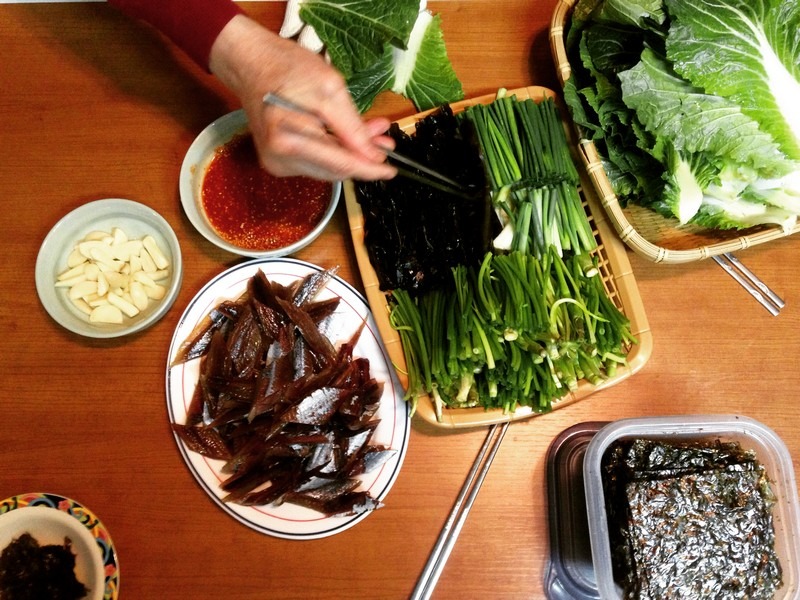
My Korean family down in Busan also has some on hand in the winter when its available and that’s how I happened to try it. While I’ve had it before, it’s always a bit different when your father-in-law is the one preparing it. I watched as he carefully and adeptly took these long dark brown fish from a bag and proceeded to de-skin them and then slice them into bite size pieces.
My mother-in-law carefully prepared baskets of a variety of greens as well as dried seaweed and wet seaweed too. There are also green onions and leeks along with raw garlic and a sauce that is a made with red pepper paste mixed with sugar and vinegar. The gwamegi is then wrapped in the leaves and seaweed and the toppings are added in to taste.


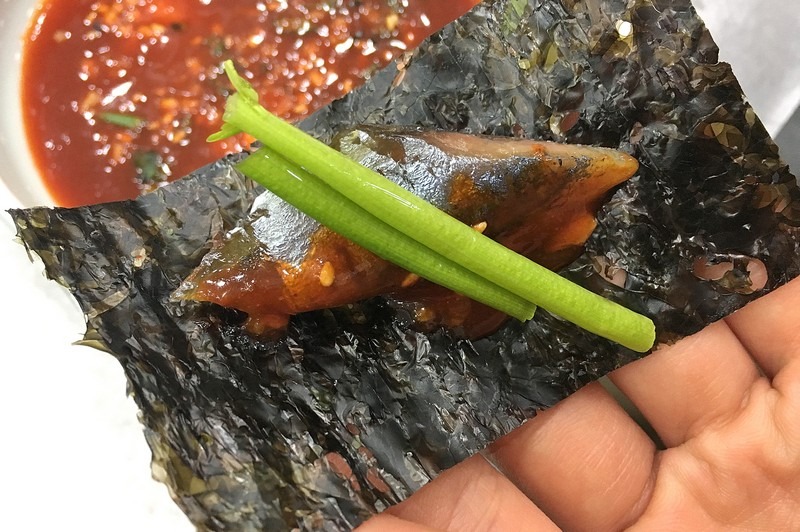
Don’t get caught up in what you wrap around the gwamegi or in what order you do it. My husband prefers his with the dried seaweed, the red sauce and some leeks. My father-in-law prefers his with the kelp and red sauce and garlic. I even ate the fish as is just to see what it tastes like on its own.
With lettuce or without, with seaweed or without, this is an oily fish meal that is enticing and delicious especially when coupled with some Korean soju as my father-in-law would recommend. If you have an appetite for a winter Korean delicacy, this is the meal for you.
Where to eat gwamegi
If you really want to get gung-ho about it, Pohang holds an annual gwamegi festival each November for lots of Pacific herring fun. Check it out to see first hand how the fish is prepared and hung to dry. It’s definitely a photo-op if there ever was one. The dish is also pretty healthy as it’s rich in DHA and omega-3 unsaturated fatty acids which help to prevent the aging of skin. Who doesn’t want that?
If you want to eat gwamegi, coastal spots are very good spots to find some. I’ve never had it in Seoul and my husband only thinks we should have it when we’re near the southern or eastern coast so that’s what I could recommend for anyone else that wants to try some gwamegi.
Did you like this post? Pin It!
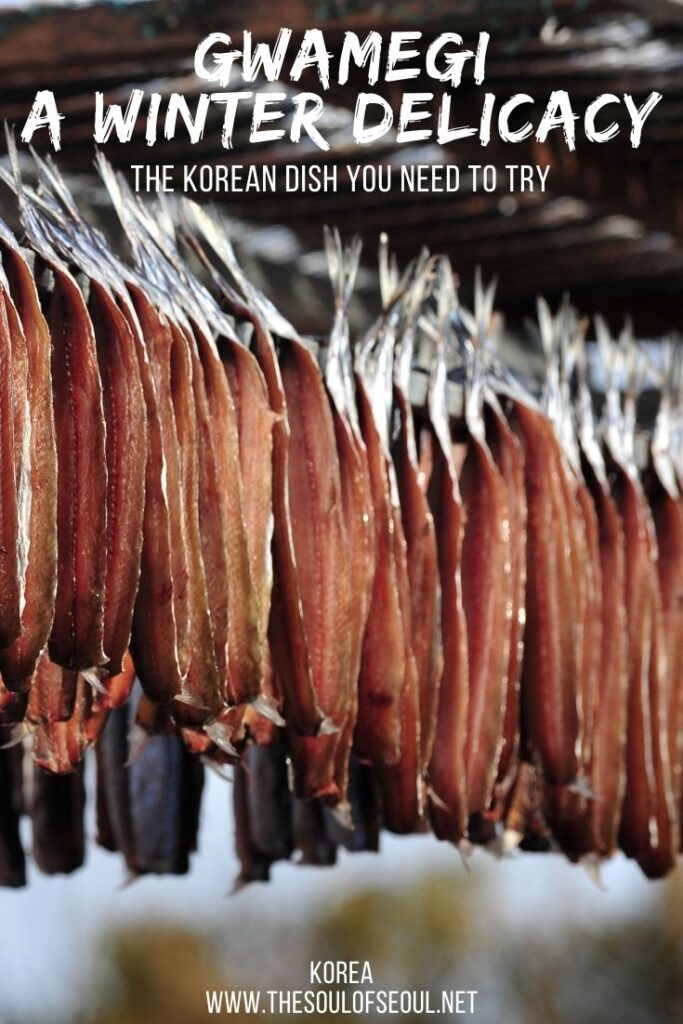
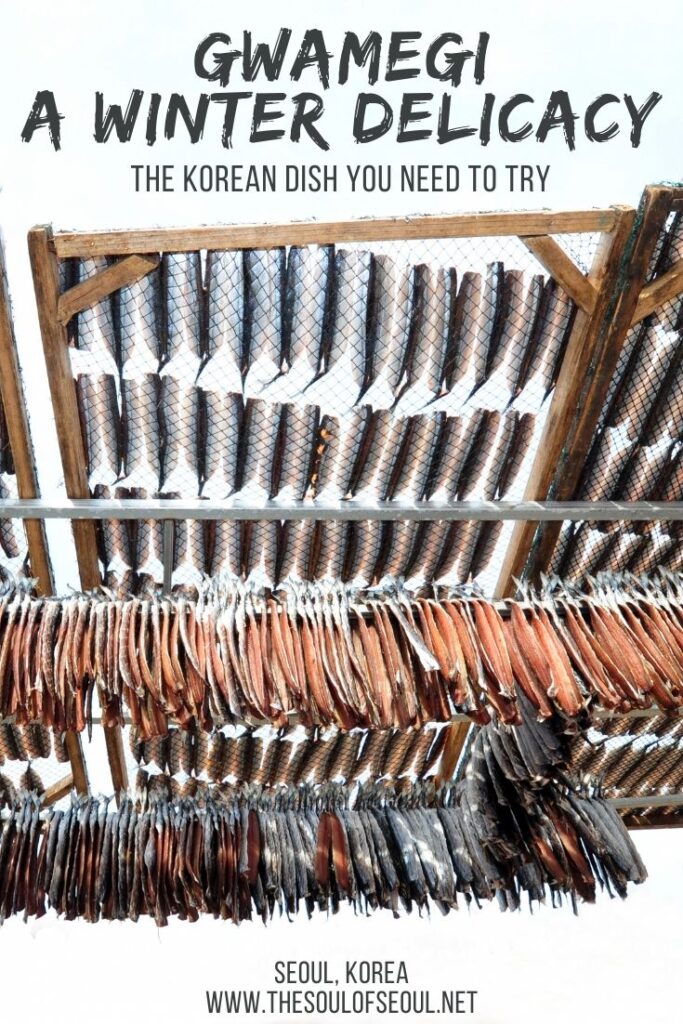


9 Comments
Mariam
Oh fresh herring! I thought they didn’t have it in Korea!
Hallie
Lots of it… but only in the winter. We eat it every time we go down to Busan to visit Jae-oo’s family in the winter. Definitely easy to find by the coast. I haven’t had it so much in Seoul though.
Cez of eTramping
Gwamegi, sounds healthy but looks..questionable? I’d try it! Thanks for sharing?
Sarah Kim
I’m Korean American and eat a lot of Korean food but this one might be too Korean food for me lol. It’s definitely more interesting to me now knowing how it’s made. Thanks for sharing!
Hallie
I really love Korean food.. I can eat pretty much anything since living here that’s for sure. I do NOT like the cow blood soup still though. That’s one thing I can’t get over.
nycgingeronthego
That’s a really interesting preparation process. I am a little picky with my fish, but I think I might take a bite. It’s important to try the local food and explore new things. You never know, I might actually love it. I used to think I didn’t like salmon. Now it’s my favorite food!
Hallie
I can’t believe you thought you didn’t like salmon at one point!! My uncle in the States owns a fish company, so I grew up eating a lot of fish. It takes quite a bit for me to NOT like fish I think.
Sandy N Vyjay
This looks like a great dish with a lot of tradition and history to it. Of course, I would not be able to taste it given by vegetarian preferences, but will have some friends definitely try it out when they are out there.
tourdelust
This sounds and looks so good! I haven’t had this before and now I need to go try it! Great information about this dish and I can’t wait to try it.